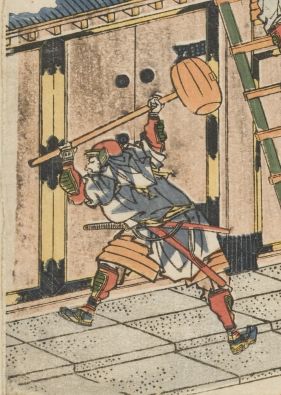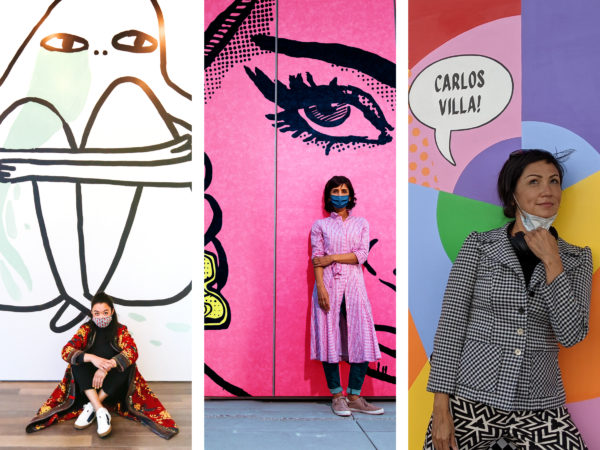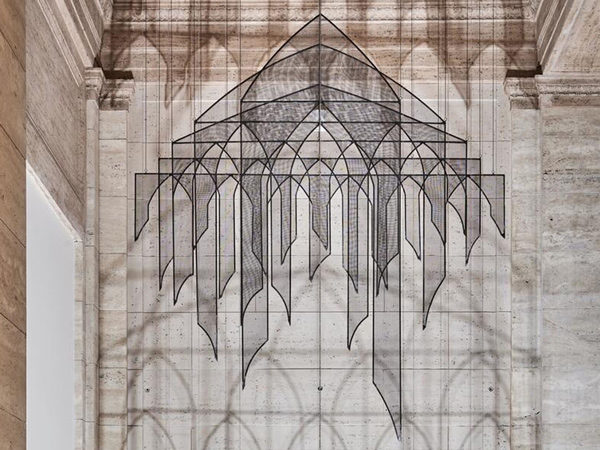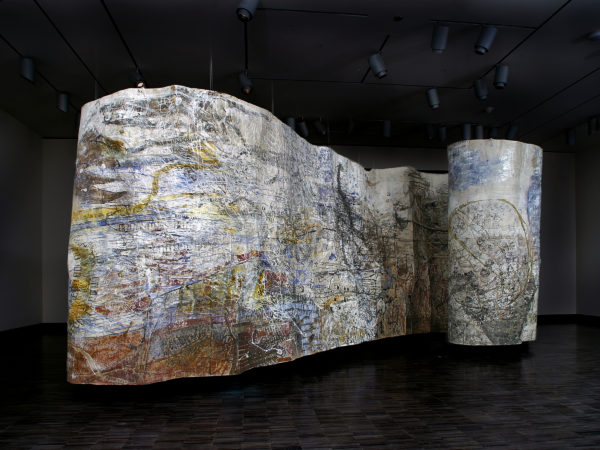Activity
Scene from the Storehouse of Loyalty (Chushingura)
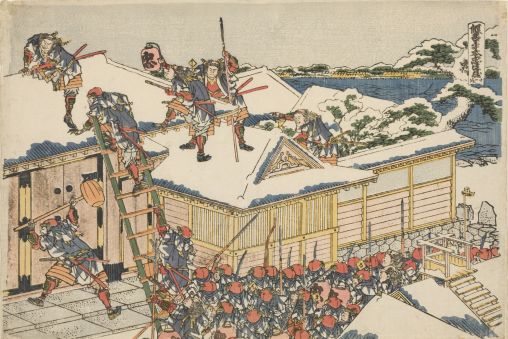
Scene from The Storehouse of Loyalty (Chushingura), 1806, by Hokusai (Japanese, 1760–1849). Japan, Edo period (1615–1868). Woodblock print; ink and colors on paper. Gift of Japanese Prints from the Collection of Emmeline Johnson, Donated by Oliver and Elizabeth Johnson, 1994.45.
What is depicted here?
The men climbing the roof of this snow-covered building are disenfranchised samurai (ronin) bent on exacting revenge for the death of their lord. Drawn from a popular narrative known as the Chushingura (The Storehouse of Loyalty), the story was based on historical events that occurred in the early 18th century.
The former samurais’ grievance originates when their master, Asano Naganori, is ordered to the palace to receive instruction from an official, Kira Yoshinaka. Goaded by Kira into drawing his sword, Asano lightly wounds the official. For the capital offence of drawing his sword at the palace, Asano is ordered to commit ritual suicide (seppuku) by disembowelment, while Kira goes free. Upon his death, Asano’s lands are confiscated, and the 47 samurai who served him are dismissed, becoming ronin (masterless samurai).
In an act of loyalty to avenge their master’s death, the men go undercover, spending almost two years carefully plotting their revenge. They eventually meet to attack Kira’s mansion on a snowy, moonlit night. The scene shown here is the moment before they discover Kira hiding in a shed behind a bundle of firewood. After taking him prisoner, the ronin decapitate Kira and parade his severed head through the streets of the capital. The tale ends with the ronin turning themselves in; they are sentenced to death by the authorities, but are allowed to take their own lives (seppuku), an honorable death according to the warrior code of Japan.
What technique was used to make this object?
Artists like Hokusai created hand-colored designs for print publishers, who then supervised teams of highly skilled artisans to manufacture woodblock prints for public sale. Separate blocks of cherrywood were carved for the outlines and each color used in the design, then a sheet of paper was applied to each inked block in succession to create the print — a match for the original drawing. Most late Edo prints were made in large editions and sold in shops and by street vendors for a small sum of money. This print came from series of 11 sheets, each illustrating a scene from one act of a Kabuki play based on the story of the 47 ronin.
Who might have owned this object?
Immensely popular, the Chushingura story was fictionalized for puppet and Kabuki dramas by the late 1740s. The publisher probably intended this print for sale to common people familiar with the story from the Kabuki theater, rather than to samurai. The existence of such prints attests to widespread enthusiasm for the exploits of the famous samurai, and the spread of the samurai code of loyalty throughout the urban population.

